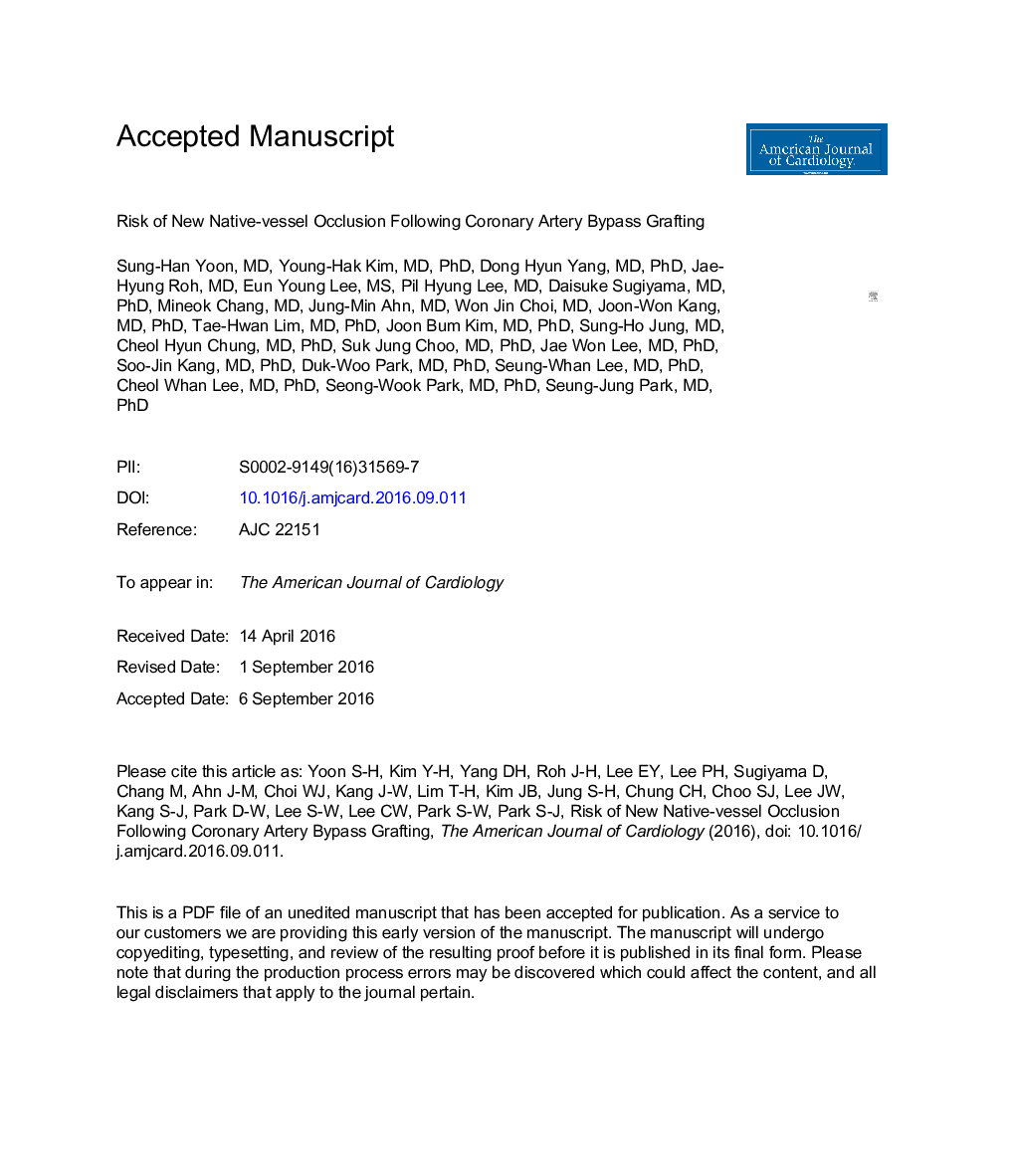| Article ID | Journal | Published Year | Pages | File Type |
|---|---|---|---|---|
| 5595486 | The American Journal of Cardiology | 2017 | 25 Pages |
Abstract
Coronary computed tomography angiography is widely used to evaluate the graft patency, but information on the progression of native-vessel disease remains limited. We sought to evaluate the impact of bypass grafting on native-vessel progression after coronary artery bypass grafting. We evaluated new native-vessel occlusion defined as occlusion length â¥15 mm as a surrogate marker of native-vessel progression. We evaluated 911 patients with 2,271 nonoccluded vessels who underwent coronary artery bypass grafting and received follow-up coronary computed tomography angiography. Over a mean follow-up period of 4.7 years, the new occlusion rates were 9.2% for left anterior descending artery (LAD), and 13.9% for non-LAD, respectively. For non-LAD, new occlusion rate of vessels with bypass grafts was higher compared to those without bypass graft regardless of baseline native-vessel stenosis (intermediate stenosis: 8.6% vs 1.7%, p <0.001; severe stenosis: 20.5% vs 9.9%, p = 0.003). Furthermore, new occlusion rate of vessels with venous graft was the highest, followed by vessels with arterial graft and vessels without bypass graft, regardless of baseline stenosis (intermediate stenosis: 11.1% vs 5.2% vs 1.7%, p <0.001; severe stenosis: 23.7% vs 15.9% vs 9.9%, p <0.001). By multivariate analysis, bypass grafting was associated with new native-vessel occlusion for non-LAD (odds ratio 3.04, 95% confidence interval 1.79 to 5.14; p <0.001). Bypass graft was associated with new native-vessel disease progression regardless of baseline stenosis. In conclusion, the decision to bypass or leave a native vessel with intermediate stenosis should cautiously be considered.
Related Topics
Health Sciences
Medicine and Dentistry
Cardiology and Cardiovascular Medicine
Authors
Sung-Han MD, Young-Hak MD, PhD, Dong Hyun MD, PhD, Jae-Hyung MD, Eun Young MS, Pil Hyung MD, Daisuke MD, PhD, Mineok MD, Jung-Min MD, Won Jin MD, Joon-Won MD, PhD, Tae-Hwan MD, PhD, Joon Bum MD, PhD, Sung-Ho MD, Cheol Hyun MD, PhD, Suk Jung MD, PhD,
